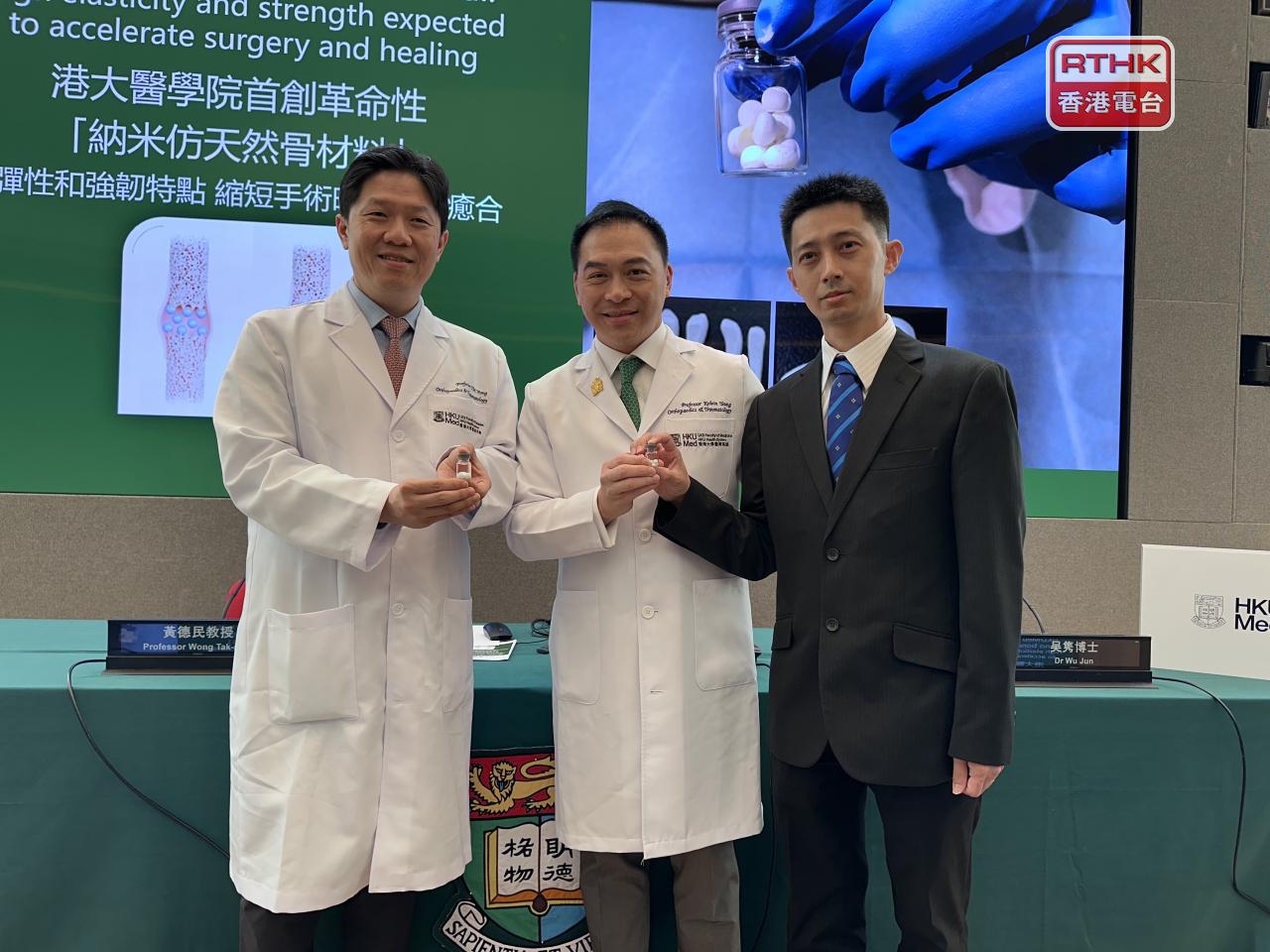A research team from the University of Hong Kong has unveiled a new elastic material, "nano bone cement", that closely mimics the look and mechanical strength of human bone.
According to the department of orthopaedics and traumatology at the faculty of medicine, this innovation offers a promising alternative to traditional bone grafts in orthopaedic surgeries.
Currently, repairing bone defects often requires a graft, a procedure that involves surgically removing tissue from another part of the patient's body or from a donor.
Professor Kelvin Yeung said tests show that the nano bone cement is not only strong but also accelerates healing.
The new material, he added, achieves a similarity to human bone in terms of mechanical properties, providing comparable toughness, of over 90 percent.
"In terms of the biocompatibilities and also the bioactivities, they can actually convince more bone growth," Yeung said.
"If the new particle or the new materials, they would expand by themselves when we inject it to the human being because when the materials absorb the body fluids and also the blood, they can actually expand.
"So all this expansion, they can actually occupy the void, occupy the empty space. Materials-wise, they can actually keep a close contact with the bone, that can actually accelerate the bone healing."
The researchers expect the cement to be particularly beneficial for spinal procedures, such as in treating compression and vertebral fractures.
While human trials have not yet begun, Yeung said animal data indicates the material is cell-compatible and shows no significant toxicity.
If further testing is successful, he estimates the nano bone cement could be ready for human use within three to five years.





